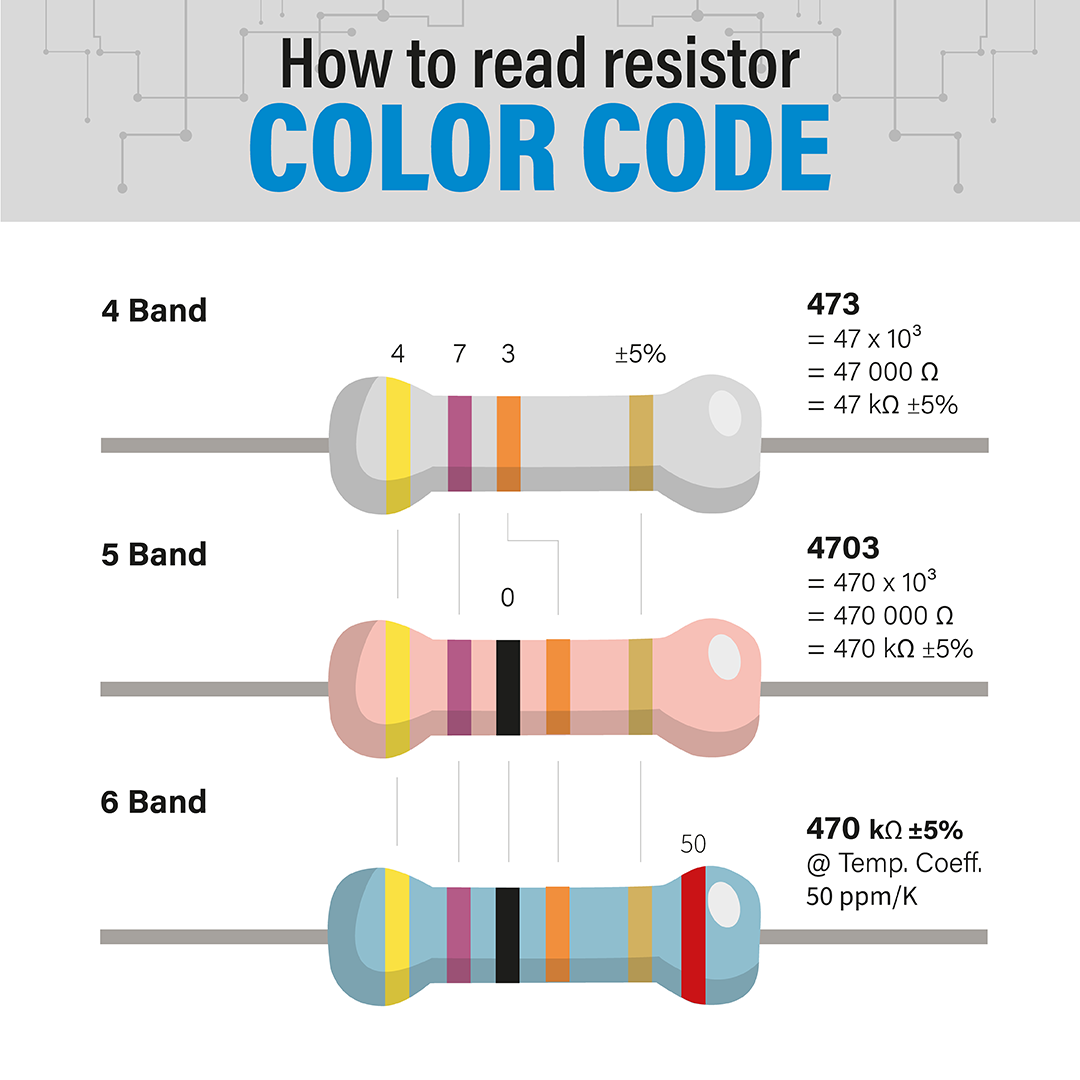
Typically, a 4-band resistor comes with a reliability band. This band is not found in commercial electronics. To meet the military specification resistors often manufactured with reliability band. Now place the first two bands as the numeric value and third band as a multiplier (10 5). For example, to calculate 1.2MΩ, the resistor shows Brown Red Green colors (read from left side to right).
470 OHM RESISTOR COLOR CODE HOW TO
To understand how to read the resistor color code for 3 /4/5/6 band resistors you can use this color chart.įrom the above chart, each color band on the resistor represents a number. Resistor Color Code Chart – 3 band 4 band 5 band and 6 band The variation of resistance is constant to temperature. The higher ppm value indicates that a resistor can withstand the higher or lower temperature. The 6-band resistor has a special property of temperature coefficient of resistance represented in ppm/Kelvin. In addition to this the 4 band, 5 band, and 6 band resistors have tolerance value ranging from ☐.10 to ☑0. The multiplier value is multiplied with the significant digit number (one, two, or three digits) to get the desired resistance value. For 5 band and 6 band resistors, the first 3 digits indicate significant numbers. This number can be used as the first significant digit and second significant digit for 3 band and 4 band.

To know, how to find color code, each color indicates a number starting from 0 to 9. The color code chart shows the 3 bands, 4 band, 5 band, and 6 band resistor strips. Whereas, the 4 band, 5 band, and 6 band resistors have an extra band known as tolerance. The three bands can be selected to know the resistor value. The 3-band resistor has three colors with multiplier and no tolerance. The Carbon composition resistors have 3 to 6 resistor color bands. For example, a 4.7K ohm resistor is shown as 4K7. It uses letter 'R' for ohms, 'K' for Kilo ohms, and 'M' for Megaohms. The smaller the tolerance percentage is, the higher the precision in your measurements.Resistors use the BS1852 (British standard) coding standard for value representation. Some projects require your measurements to be more precise than others, and for this reason the tolerance band is useful in identifying which resistor will give you a more accurate resistance reading.
470 OHM RESISTOR COLOR CODE FULL
To get around this, the third band indicates that a certain number of zeros should be added after the first two digits to make up the full resistor value. Resistor values can get to be very high in number, and there often isn't enough space to use a band for every digit.

Since brown is 1, it means add one zero to the right of the first two digits.Īlthough the first two bands are fairly straightforward, the third and fourth bands might require a bit more explanation. The second stripe is violet, which means the next digit is a 7.The first stripe is yellow, which means the leftmost digit is a 4.Here is an example that shows how the table and resistor shown above can be used to figure out a resistor value by proving that yellow-violet-brown is really 470 Ω: The order in which the colors are arranged is very important, and each value of resistor has its own unique combination. The colored bands on a resistor can tell you everything you need to know about its value and tolerance, as long as you understand how to read them. This value's unit is the ohm, often noted with the Greek letter omega: Ω. Each one has a value that tells how strongly it resists current flow. Resistors resist the flow of electrical current.


 0 kommentar(er)
0 kommentar(er)
